Introduction
As we age, maintaining physical strength and energy becomes increasingly important to leading an active and independent lifestyle. For seniors who are committed to staying active, whether through walking, light strength training, yoga, or more intense exercise routines, ensuring adequate protein intake is essential. Protein plays a vital role in preserving muscle mass, repairing tissue, and supporting overall energy levels, all of which are key to maintaining vitality in the later years of life.
Protein Needs for Active Seniors are often higher than for those who lead a more sedentary lifestyle. This is because physical activity places additional demands on the body, particularly the muscles, which rely on protein for repair and growth after exercise. As we age, however, our ability to process and absorb protein efficiently diminishes, making it even more important for seniors to consume enough of this critical nutrient on a daily basis.
One of the most significant challenges seniors face is a natural decline in muscle mass, a condition known as sarcopenia, which can lead to weakness, reduced mobility, and an increased risk of falls. Regular physical activity helps combat this, but without sufficient protein, the benefits of exercise may be limited. Protein not only aids in rebuilding muscles but also helps maintain endurance, stamina, and overall energy, all of which are necessary to enjoy an active lifestyle well into later life.
Furthermore, protein supports immune function and aids in the healing and recovery process, which becomes increasingly important as the body ages. Seniors who do not meet their protein needs may find themselves feeling fatigued, experiencing slower recovery times after activity, and even becoming more susceptible to illness. This blog post will explore how much protein active seniors really need, the best sources of protein, and practical tips for ensuring that dietary intake supports continued strength and vitality.
1. The Role of Protein in Aging and Physical Activity
As we age, the body undergoes several changes that can impact physical strength, mobility, and overall health. One of the most significant changes is the gradual decline in muscle mass, known as sarcopenia. This natural process begins as early as age 30 and accelerates after the age of 60. Without proper intervention, this loss of muscle can lead to frailty, increased risk of falls, and a reduced ability to perform daily activities. For seniors who maintain an active lifestyle, protein becomes a crucial nutrient to combat this decline and support muscle health.
Protein plays an essential role in building, maintaining, and repairing muscle tissue. This is especially important for active seniors, as physical activity creates micro-tears in muscle fibers. When the body repairs these tears, it strengthens the muscles, but it needs an adequate supply of protein to do so effectively. Protein Needs for Active Seniors are therefore higher than for those who are less physically active, as their bodies require more protein to repair and build stronger muscles in response to exercise.
Muscle Maintenance and Repair
One of the primary functions of protein in the body is to maintain and repair muscles. As seniors engage in activities such as strength training, walking, or even gardening, their muscles are constantly being broken down and rebuilt. Without sufficient protein, this process becomes less efficient, leading to muscle weakness over time. For seniors who wish to stay active and independent, ensuring adequate protein intake is essential for maintaining muscle strength and preventing the progression of sarcopenia.
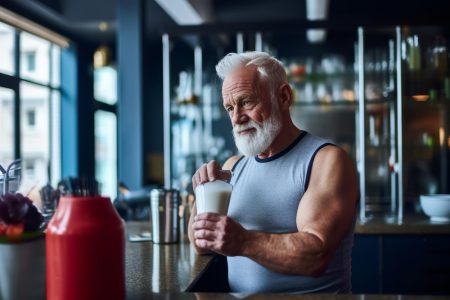
For example, research shows that seniors who engage in regular physical activity and consume enough protein are more likely to retain muscle mass, improve mobility, and reduce their risk of injury. Protein helps muscles recover faster after exercise, enabling seniors to continue engaging in the activities they love without prolonged soreness or fatigue.
Energy and Endurance
In addition to supporting muscle maintenance, protein is also a valuable source of long-lasting energy. For active seniors, maintaining energy levels throughout the day is crucial to staying engaged in physical activity. Protein helps stabilize blood sugar levels, preventing energy crashes that can lead to fatigue. Seniors who consume enough protein in their diet often experience better endurance during exercise and daily tasks, enabling them to stay active for longer periods without feeling exhausted.
By meeting their protein needs, seniors can support not only muscle strength and repair but also ensure they have the energy and stamina to maintain a fulfilling and active lifestyle.
2. How Much Protein Do Active Seniors Really Need?
As we age, our bodies require more attention to nutrient intake to maintain health, strength, and vitality. Protein is one of the most critical nutrients for seniors, especially those who remain active. Understanding the specific protein needs for older adults is essential for ensuring that muscles are maintained, energy levels are sustained, and overall health is optimized. But how much protein do active seniors really need to thrive?
General Protein Guidelines for Active Seniors
For most adults, the Recommended Dietary Allowance (RDA) for protein is around 0.8 grams of protein per kilogram of body weight per day. However, research has shown that Protein Needs for Active Seniors are higher than this standard recommendation. Seniors engaged in regular physical activity—whether it's strength training, aerobic exercises, or even gardening and walking—require more protein to support muscle repair and overall recovery.
A common recommendation for active seniors is to aim for 1.0 to 1.2 grams of protein per kilogram of body weight daily. For example, a senior weighing 70 kilograms (about 154 pounds) would need between 70 and 84 grams of protein per day. This increased intake helps to counteract age-related muscle loss and promotes greater muscle synthesis after exercise.
For those engaging in more intense physical activities, such as resistance training or running, protein needs may be even higher. Some experts suggest that seniors participating in strength-building exercises might benefit from consuming up to 1.5 grams of protein per kilogram of body weight.
Protein Distribution Throughout the Day
While hitting the overall daily protein target is important, how that protein is distributed throughout the day matters just as much. Many seniors consume the bulk of their protein during dinner, which can lead to suboptimal muscle synthesis earlier in the day. Instead, spreading protein intake evenly across meals has been shown to improve muscle maintenance and repair.
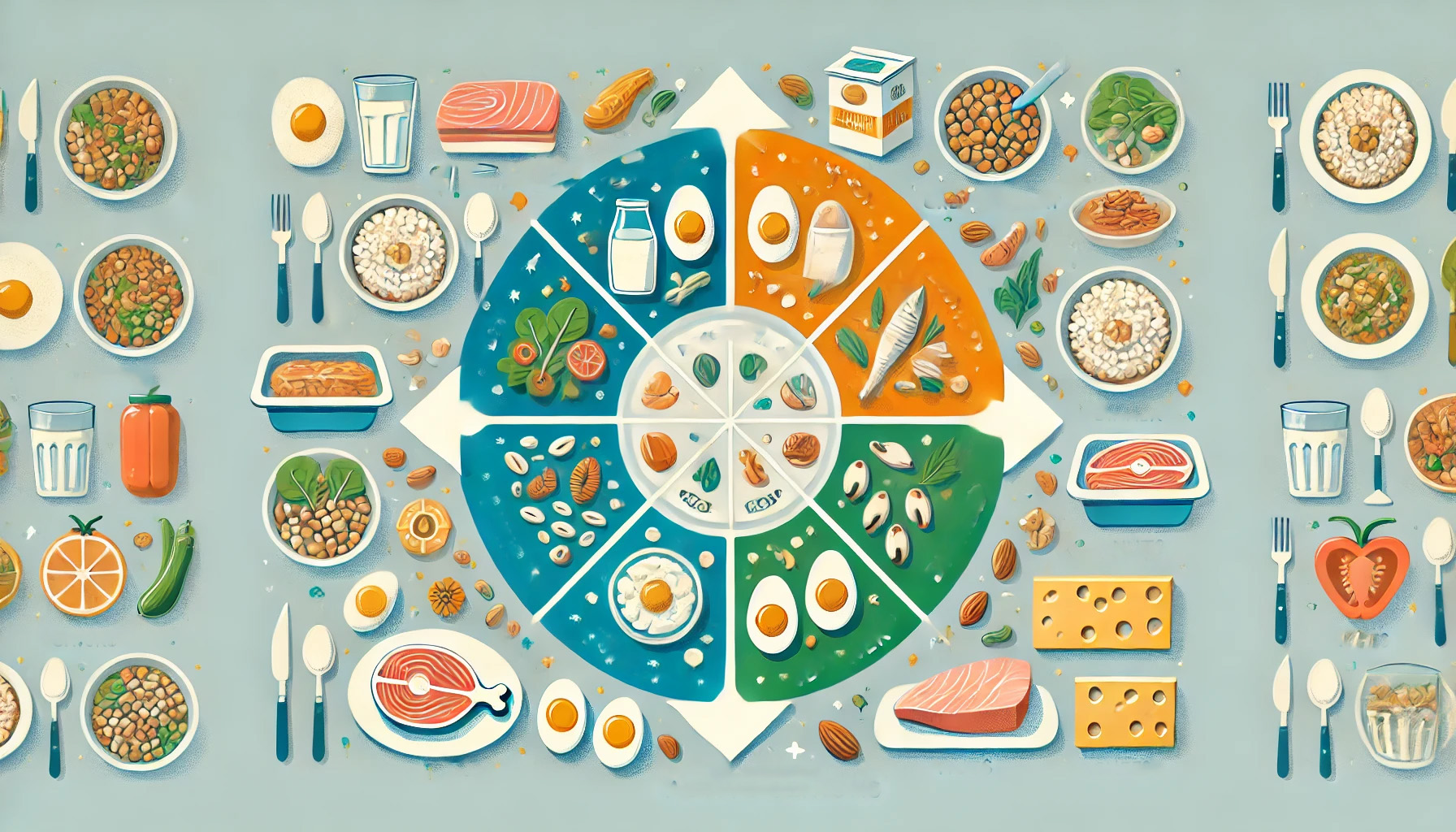
For example, a senior aiming to consume 90 grams of protein per day could break it down into three meals of 30 grams each, or 20-30 grams of protein at breakfast, lunch, and dinner, with a few protein-rich snacks in between. This balanced distribution helps ensure that the body has a steady supply of amino acids to support muscle repair and energy production throughout the day.
Meeting Protein Needs with Different Diets
Seniors who follow specific dietary patterns, such as plant-based or low-carb diets, may need to pay extra attention to how they meet their protein needs. For vegetarians or vegans, combining different plant-based sources of protein (like beans, lentils, quinoa, and tofu) throughout the day can ensure a complete amino acid profile. Those following low-carb diets can focus on protein-rich foods like lean meats, eggs, and dairy products.
Ensuring that protein needs are met is crucial for active seniors to maintain strength, energy, and overall well-being. With the right amount of protein and a thoughtful approach to meal distribution, seniors can support their health and stay active well into their later years.
3. Best Sources of Protein for Seniors
Meeting protein requirements is essential for seniors to maintain muscle strength, energy levels, and overall health, especially if they are physically active. However, not all protein sources are created equal, and it’s important for seniors to incorporate a variety of high-quality protein options in their diet. This section will explore the best animal-based, plant-based, and supplemental sources of protein to ensure seniors are meeting their needs.
Animal-Based Protein Sources
Animal-based proteins are considered “complete proteins,” meaning they contain all the essential amino acids that the body needs for muscle repair and other functions. These sources are typically high in bioavailability, meaning they are easily absorbed and utilized by the body. For seniors, especially those who are physically active, these options can help meet their protein needs efficiently.
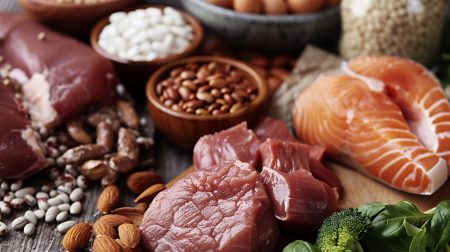
Lean Meats and Poultry: Chicken, turkey, and lean cuts of beef and pork are excellent sources of high-quality protein. These options are also low in unhealthy fats, making them heart-healthy choices for seniors who need to watch their fat intake.
Fish and Seafood: Fish, such as salmon, tuna, and cod, provide not only high-quality protein but also healthy omega-3 fatty acids, which are beneficial for heart health and cognitive function. Seniors should aim to eat fish at least twice a week for added health benefits.
Eggs: Eggs are a versatile and nutrient-dense source of protein. They are easy to prepare and digest, making them an excellent option for seniors who may have digestive issues or trouble chewing harder foods.
Dairy Products: Milk, yogurt, and cheese are rich in both protein and calcium, which are crucial for maintaining bone strength. Greek yogurt, in particular, is a great option because it contains higher levels of protein than regular yogurt.
Plant-Based Protein Sources
For seniors who follow a vegetarian or plant-based diet, there are plenty of protein-rich foods that can help meet their Protein Needs for Active Seniors. While plant-based proteins are often considered “incomplete,” meaning they lack one or more essential amino acids, combining different sources throughout the day can provide all the necessary nutrients.
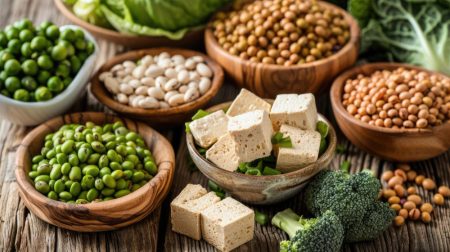
Legumes: Beans, lentils, and chickpeas are excellent sources of protein and fiber. They are affordable and versatile, easily incorporated into soups, stews, and salads.
Quinoa: Unlike most plant-based proteins, quinoa is a complete protein, providing all nine essential amino acids. It is also rich in fiber and magnesium, making it a nutritious addition to any meal.
Nuts and Seeds: Almonds, chia seeds, hemp seeds, and sunflower seeds are high in protein and healthy fats. These can be added to meals like salads or oatmeal for an extra protein boost.
Tofu and Tempeh: Made from soybeans, tofu and tempeh are excellent plant-based protein sources. They are highly versatile and can be grilled, stir-fried, or added to soups and salads.
Protein Supplements for Seniors
In some cases, it may be difficult for seniors to meet their protein needs through food alone, especially if they experience reduced appetite or difficulty preparing meals. Protein supplements can be an effective way to bridge the gap.
Whey Protein: Whey is a fast-digesting complete protein that is popular for its ease of use and high bioavailability. A whey protein shake after exercise can support muscle repair and recovery.
Plant-Based Protein Powders: For those who prefer plant-based options, protein powders made from peas, hemp, or rice can offer a convenient and nutritious alternative. These can be blended into smoothies or mixed with water or milk.
Incorporating a combination of these high-quality protein sources into daily meals can help seniors meet their protein needs, supporting their strength, vitality, and ability to stay active as they age.
4. The Importance of Timing: Post-Workout Protein
For active seniors, maintaining muscle strength and recovery after physical activity is crucial to staying fit, energized, and independent. While it’s important to consume enough protein throughout the day, the timing of protein intake also plays a vital role in muscle repair and overall recovery. Post-workout protein consumption, in particular, is critical for maximizing the benefits of exercise, aiding in muscle recovery, and reducing soreness. Understanding when and how to consume protein after physical activity can significantly impact the health and well-being of seniors.
Why Post-Workout Protein Matters
During physical activity, muscles are subjected to stress and strain, which leads to the breakdown of muscle fibers. This breakdown is a normal part of exercise, and it's the process of repairing these fibers that leads to muscle growth and strengthening. To repair and rebuild effectively, the body requires a fresh supply of amino acids, the building blocks of protein. This is where post-workout protein becomes essential, as consuming protein after exercise provides the necessary nutrients to kickstart muscle recovery.
For seniors, this recovery process is particularly important because the body’s ability to synthesize protein and repair muscles decreases with age. By ensuring adequate protein intake immediately after exercise, active seniors can better support muscle repair and reduce the risk of muscle loss over time.
The Ideal Time to Consume Protein After Exercise
The body is most receptive to absorbing protein within a window of about 30 minutes to two hours after physical activity. This period, often referred to as the “anabolic window,” is when muscle protein synthesis is at its highest. For active seniors, consuming a protein-rich meal or snack shortly after exercise helps to maximize the benefits of their workout and accelerate the recovery process.
For example, after completing a strength training session or a brisk walk, seniors should aim to eat a snack or meal that contains a good source of high-quality protein, such as a protein shake, Greek yogurt, or a turkey sandwich. This ensures that the body has the nutrients it needs to repair and rebuild muscle tissue promptly.
Protein-Rich Post-Workout Snack Ideas
Meeting Protein Needs for Active Seniors can be simple with easy-to-prepare, protein-rich snacks after exercise. Some options include:
Protein Smoothie: Blend whey or plant-based protein powder with milk, yogurt, and fruit for a refreshing and nutrient-dense recovery shake.
Greek Yogurt with Berries: Greek yogurt is packed with protein, and adding some fresh berries offers additional antioxidants to aid in recovery.

Hard-Boiled Eggs: Eggs are a convenient, high-quality protein source that can be prepared in advance and eaten immediately after a workout.
Turkey or Chicken Wrap: A whole-grain wrap with lean turkey or chicken provides a solid post-workout protein boost and healthy carbohydrates for replenishing energy.
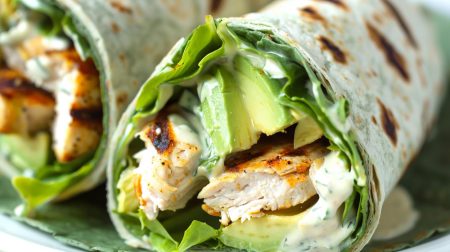
Benefits of Timely Protein Intake
Incorporating protein soon after exercise can offer several key benefits for active seniors:
Faster Muscle Recovery: By providing the necessary building blocks for muscle repair, post-workout protein reduces recovery time, allowing seniors to maintain an active lifestyle without prolonged soreness.
Reduced Muscle Soreness: Adequate protein intake post-exercise helps reduce delayed onset muscle soreness (DOMS), making it easier to stay consistent with physical activity.
Improved Muscle Strength: Consistent protein intake after workouts leads to greater muscle gains over time, helping seniors maintain their strength and independence.
By focusing on the timing of protein intake, especially after physical activity, seniors can enhance their muscle recovery, improve strength, and continue enjoying an active and fulfilling life.
5. Practical Tips to Boost Protein Intake
Meeting the daily protein requirements for active seniors can sometimes be challenging, especially when factors like reduced appetite, food preferences, or digestive issues come into play. However, it is essential to ensure seniors consume enough protein to support muscle health, energy levels, and overall vitality. By incorporating a few simple strategies into their daily routine, seniors can meet their protein needs without overwhelming meal plans or complex diets. Here are some practical tips to boost protein intake in a way that is manageable and sustainable.
Protein-Rich Breakfast Ideas
Breakfast is often the most overlooked meal when it comes to protein intake, yet it sets the tone for the rest of the day. For active seniors, a protein-rich breakfast can help prevent muscle loss and keep energy levels high throughout the morning. Instead of relying on carbohydrates like cereal or toast, consider adding a protein source to the first meal of the day.
Eggs: One of the easiest and most versatile sources of protein, eggs can be boiled, scrambled, or made into an omelet with vegetables. Just one large egg contains about 6 grams of protein.
Greek Yogurt: Greek yogurt is an excellent option because it provides nearly double the protein of regular yogurt. Pair it with fruits and nuts for a nutrient-dense breakfast that offers around 15-20 grams of protein per serving.
Protein Smoothie: For those who prefer a lighter breakfast, a protein smoothie made with whey or plant-based protein powder, along with milk, fruit, and spinach, can provide a protein boost of 20-30 grams.
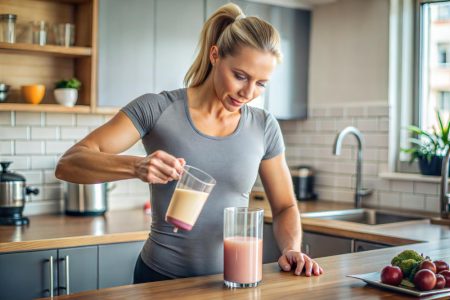
Protein-Packed Snacks
Snacking is an excellent way to meet Protein Needs for Active Seniors, especially for those who may struggle to consume large portions during main meals. Choosing high-protein snacks can help seniors increase their overall protein intake without requiring major changes to their diet.
Nuts and Seeds: A handful of almonds, walnuts, or sunflower seeds provides a convenient source of both protein and healthy fats. One ounce of almonds contains around 6 grams of protein.
Cottage Cheese: Cottage cheese is a protein powerhouse, with one cup offering around 25 grams of protein. It can be eaten on its own, paired with fruit, or spread on whole-grain crackers.
Boiled Eggs: As a quick and portable snack, hard-boiled eggs are an easy way to add about 6 grams of protein per egg to the day’s intake.
Incorporating Protein in Every Meal
Another effective way to ensure seniors are getting enough protein is to make sure every meal includes a good protein source. This doesn't have to be difficult or time-consuming—it’s about making small, consistent choices to prioritize protein at each meal.
Add Protein to Soups and Salads: Consider adding grilled chicken, beans, or tofu to salads or soups. These ingredients boost the protein content without drastically altering the meal.
Choose High-Protein Grains: Grains like quinoa and farro are not only high in fiber but also provide more protein than traditional grains like white rice. Adding these to stir-fries or as a side dish can easily increase protein intake.
Pair Vegetables with Protein: Instead of just having a vegetable dish, pair it with a protein-rich food like lean beef, fish, or legumes. This helps to balance the meal and ensures sufficient protein consumption.
Summary: A Balanced Approach to Protein Intake
By following these simple tips—starting with a protein-packed breakfast, incorporating protein-rich snacks, and ensuring that every meal contains a protein source—seniors can easily meet their daily protein requirements. These practical strategies help address the unique Protein Needs for Active Seniors, ensuring they stay strong, healthy, and active as they age.
6. Common Barriers to Protein Intake in Seniors (and How to Overcome Them)
As people age, meeting daily protein needs can become more challenging due to a variety of factors. For active seniors, ensuring they get enough protein is essential for maintaining muscle mass, strength, and overall vitality. However, obstacles such as reduced appetite, digestive issues, or budget constraints can make it difficult to reach protein goals. In this section, we will explore some of the most common barriers to protein intake in seniors and provide practical solutions to help overcome these challenges. By addressing these issues, seniors can ensure they meet their Protein Needs for Active Seniors and maintain an active, healthy lifestyle.
Reduced Appetite
One of the most common issues seniors face is a natural reduction in appetite as they age. This can be due to a variety of reasons, including changes in metabolism, a slower digestive system, or medication side effects. For active seniors, consuming adequate protein is crucial to support muscle repair and energy, but reduced https://nplink.net/sdyt7b43appetite can make it difficult to eat large meals.
How to Overcome Reduced Appetite:
Smaller, More Frequent Meals: Instead of aiming for three large meals, try eating smaller, protein-rich meals throughout the day. This can make it easier to consume the required amount of protein without feeling overwhelmed.
Protein-Rich Snacks: Incorporating high-protein snacks like Greek yogurt, nuts, or protein smoothies between meals can help seniors reach their protein goals without needing to consume large meals.
Flavor Enhancements: Some seniors may lose their sense of taste or experience a decrease in food enjoyment. Adding herbs, spices, or sauces can enhance the flavor of meals, making food more appetizing and encouraging better protein intake.
Digestive Issues
Digestive problems, such as difficulty chewing, slower digestion, or intolerance to certain foods, can also present challenges for seniors when it comes to protein intake. Foods like tough cuts of meat may be harder to chew or digest, making it difficult to consume enough protein from traditional sources.
How to Overcome Digestive Issues:
Opt for Soft or Easily Digestible Proteins: Foods like eggs, fish, tofu, and Greek yogurt are softer and easier to chew, making them ideal for seniors with dental issues or digestive discomfort.
Cook Protein Foods Gently: Slow-cooked meats, stews, or soups with tender cuts of protein can make it easier to digest while still providing plenty of protein.
Smaller Portions More Frequently: For seniors who feel full quickly or experience bloating, eating smaller portions of protein more frequently throughout the day can help ensure they are still getting enough without overloading the digestive system.
Budget Constraints
Another common barrier to adequate protein intake in seniors is cost. High-quality sources of protein like fresh meat or seafood can be expensive, and many seniors are on fixed incomes. This can lead to an under-consumption of protein-rich foods, which are vital for muscle maintenance and overall health.
How to Overcome Budget Constraints:
Affordable Protein Sources: Options like eggs, canned tuna, beans, lentils, and frozen chicken are budget-friendly and still provide plenty of protein. These items can be purchased in bulk and stored for long periods, making them cost-effective choices.
Meal Planning: Planning meals in advance and buying in bulk can help save money. Seniors can prepare meals in larger batches, like soups or casseroles, and freeze them for future use. This helps ensure that healthy, protein-rich meals are always on hand.
Use Community Resources: Some seniors may qualify for government programs or local food banks that provide affordable, healthy food options, including protein-rich items like milk, eggs, or canned meats.
Summary: Overcoming Barriers to Meet Protein Needs
By addressing these common barriers—reduced appetite, digestive issues, and budget constraints—seniors can make simple adjustments to ensure they meet their daily protein requirements. With thoughtful planning and creative solutions, seniors can overcome these challenges and meet their Protein Needs for Active Seniors, allowing them to maintain their strength, health, and independence well into their later years.
7. Benefits of Maintaining Adequate Protein Intake for Active Seniors
Ensuring adequate protein intake is essential for everyone, but it becomes even more crucial as we age, particularly for seniors who maintain an active lifestyle. The benefits of meeting daily protein requirements go beyond simply supporting muscle mass. Protein plays a vital role in various bodily functions, including maintaining immune health, improving bone strength, and supporting overall energy and endurance levels. In this section, we will explore the numerous benefits that meeting the Protein Needs for Active Seniors can provide, helping them maintain strength, vitality, and independence.
Improved Muscle Strength and Mobility
One of the most significant benefits of adequate protein intake for seniors is its role in maintaining and improving muscle strength. As we age, muscle mass naturally decreases in a condition known as sarcopenia. Without sufficient protein intake, the body struggles to repair and build muscle, leading to weakness, frailty, and a higher risk of falls.
How Protein Supports Muscle Health:
Muscle Repair and Growth: After physical activity, protein provides the necessary amino acids to repair the micro-tears in muscle fibers caused by exercise. This repair process is what leads to stronger, more resilient muscles.
Preserving Muscle Mass: For active seniors, maintaining muscle mass is crucial for mobility and independence. Consuming enough protein helps slow the natural loss of muscle mass that comes with aging, allowing seniors to continue their activities without losing strength.
Reducing the Risk of Falls: Maintaining muscle strength and balance helps seniors avoid falls, which can lead to serious injuries. Adequate protein intake supports the muscle function needed for everyday activities like walking, lifting, and climbing stairs.
Enhanced Immune Function
Protein also plays a key role in supporting the immune system. For seniors, whose immune response may already be weaker, getting enough protein is essential to stay healthy and ward off infections.
How Protein Boosts Immunity:
Building Immune Cells: The body uses protein to create antibodies and other immune cells that protect against viruses and bacteria. Without enough protein, the immune system can become compromised, making seniors more susceptible to illness.
Wound Healing: Protein is crucial for tissue repair, which becomes increasingly important for seniors recovering from injuries or surgeries. It accelerates the body’s ability to heal wounds, preventing complications that could arise from slower healing times.
Better Bone Health
While calcium and vitamin D are often the nutrients most associated with bone health, protein also plays a crucial role in maintaining strong bones. Seniors need to consider their protein intake when looking to prevent conditions like osteoporosis.
How Protein Supports Bone Strength:
Maintaining Bone Density: Protein helps maintain bone density by providing the necessary building blocks for bone tissue. For seniors, this can help prevent fractures and bone-related injuries.
Supporting Joint Health: By helping to repair connective tissues, protein aids in keeping joints healthy and functional, which is particularly important for active seniors who want to avoid stiffness and joint pain.
Increased Energy and Endurance
Adequate protein intake is not only essential for muscle and bone health but also for sustaining energy levels throughout the day. Active seniors need consistent energy to maintain their exercise routines and enjoy everyday activities.
How Protein Provides Energy:
Long-Lasting Energy Source: Unlike simple carbohydrates, which cause quick spikes and crashes in energy, protein provides a more sustained energy source. This allows seniors to maintain endurance during physical activities without feeling fatigued.
Preventing Muscle Fatigue: After exercise, protein helps reduce muscle soreness and fatigue, allowing seniors to recover more quickly and stay active without prolonged periods of rest.
Summary: The Far-Reaching Benefits of Protein for Active Seniors
Meeting the Protein Needs for Active Seniors provides numerous health benefits that extend beyond maintaining muscle mass. From enhancing immune function and supporting bone health to boosting energy levels and endurance, ensuring adequate protein intake is vital for active seniors to maintain their health, strength, and independence. By prioritizing protein in their diet, seniors can enjoy a more active and fulfilling lifestyle well into their later years.
Conclusion: Prioritizing Protein for Healthy Aging and Vitality
Maintaining adequate protein intake is essential for supporting the overall health and well-being of active seniors. As the body ages, muscle mass naturally decreases, and without sufficient protein, this decline can lead to frailty, reduced mobility, and an increased risk of injury. However, by focusing on meeting their daily Protein Needs for Active Seniors, individuals can preserve muscle strength, improve recovery after physical activity, and maintain a higher level of independence and vitality.
Beyond muscle health, protein plays a key role in supporting immune function, aiding in wound healing, and promoting bone density, which helps protect seniors from infections and fractures. Additionally, protein provides a more sustainable energy source, helping seniors maintain the stamina and endurance needed for an active lifestyle.
By incorporating a variety of protein sources—such as lean meats, plant-based options, and high-protein snacks—and timing protein intake strategically, seniors can effectively meet their nutritional needs. Overcoming common barriers, like reduced appetite or budget constraints, through practical solutions further ensures that seniors can maintain a balanced, protein-rich diet. Ultimately, prioritizing protein in their daily nutrition allows seniors to stay strong, healthy, and active as they age, promoting a higher quality of life well into their later years.


